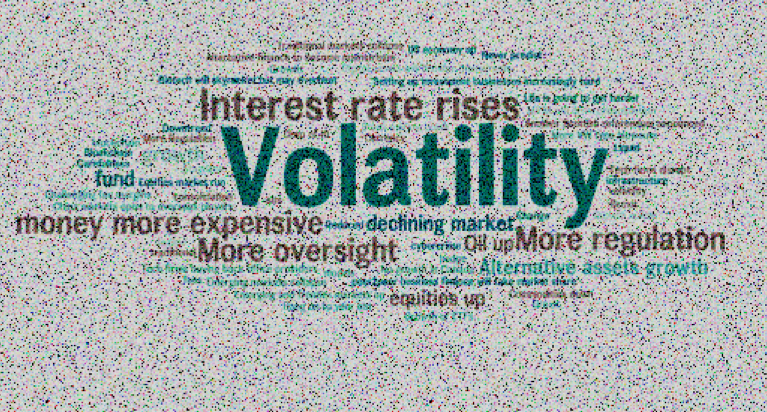We continue series based on the book “The Pragmatic Hedge Fund Manager” started with Part 1 on The History of Hedge Fund Industry. Below is the second part introducing Hedge fund trends and strategy recommendation for small and mid-sized Hedge funds for investors’ attraction.
Some of the most popular Hedge Fund Trends for 2014 are:
- Equity Long-Short will continue to be the most used strategy- By now you must be well versed with Equity Long-Short. Long-Short formed 40% of the Assets under Management of Hedge Funds in 2008. While this share reduced to 25% in the years leading up to 2013, according to expert predictions, the Long-Short strategy is due to be back this year because of its tremendous potential to achieve double-digit profits.
- Positive flows into the industry by Institutional Investors– One prominent trend in this market will be the shift from Fixed Income to Hedge Fund Investments. Due to this flow, the industry will see an all-time high in Assets under Management for Hedge Funds. Those who continued to follow this trend in the previous year reported that their Hedge Fund investment shot up by 8.5%.
- More in the hands of the Few– A trend that has always been common for the Hedge Fund industry is seeing the highest and more productive returns in the hands of the few managers who run the most competitive and successful Hedge Fund brands in the market. The larger the asset base, the greater the inflow of investment for the managers.
The reason for such a trend is that most institutional investors have now developed relationships and ties with Hedge Fund managers who have always dealt with their money. Hence, when these investors pitch in money, time and again, it usually goes to the same Funds that they have always worked with.
Moreover, because of the imminent fear of seeing Hedge Funds dip in the next business cycle, all institutional investors will be practicing extra caution and thus staying away from those companies that have a smaller asset base.
For the smaller, mid-sized Hedge Funds, all is not lost. If they continue to strive and provide the best buffer and returns, there is no doubt they can attract part of the investor’s attention. To do so, the following is necessary:
- A clear distinction of the factors that are in play for the top-notch Hedge Funds
- Implementation of a distribution strategy that reaches every faction of the market
- Offering high quality Funds that are in demand
- Extreme Competition– While there may have been only 130 Hedge Funds in the 1970s, this number has gone up manifold in today’s market. Cutting-edge competition exists in the Hedge Fund Industry because more and more institutional investors are now thinking of taking a leap from being risk-averse to risk- loving, owing to the high returns promised.
- Decline in the Hedge Fund Fee– Another prominent trend in today’s Hedge Fund market will a sharp decline in the fee charged by Hedge Funds. While their popularity is viable, there is considerable fee pressure exerted by institutional investors on Hedge Funds, who have started to reconsider the wisdom behind such high fee structures. Moreover, the profitability margins for Hedge Fund Managers are considerably high as compared to the management of other such instruments. With this view, the 20% incentive fee suggested by Jones has and will see a further cut.
- Hedge Funds will close to investors– Just as the fee goes down and extreme competition surfaces, the top-notch Hedge Funds will stop taking on board new investors. The reason for this trend is something that the Hedge Fund industry has been criticized for quite often. Because the incentive fee and the profit cut for Hedge Fund managers is sizeable, many believe that these managers have started to focus more on collecting management fees to profit themselves instead of maximizing returns for the investors. Hence, to refocus the management’s attention and efforts, Hedge Funds will close off to investors.
- Increased marketing requirements in the EU– Due to stringent requirements in the EU regarding registration in every country of the region, Hedge Funds marketing efforts are sure to see a decline in 2014. Once the regulation expires in 2015, giving the right for companies to access the region with a single registration, marketing efforts will peak once again. A rather negative trend, this requirement will mean that Hedge Funds in the region will struggle in attracting international and global investments.
- Better aligned Fund Liquidity– Previously, liquidity of the funds needed for a Hedge Fund were determined by Funds of Funds. This meant that liquidity was checked and evaluated even for those strategies that were illiquid at the moment. However, this trend has changed today. Institutional investors who are extremely powerful in the overall equation of how a Hedge Fund works have exerted enough influence to not only change the liquidity term, but also to align it with the viability of the strategies used and the Assets under Management in the Hedge Fund.
Two trends related to this change have surfaced; institutional investors insist that for liquid strategies like Equity Long-Short, a monthly liquidity term with a soft lock up should be implemented, while for less liquid strategies, longer notices and frequent redemptions should be offered. - Positive Flow to Niche specific Funds of Funds– While funds for general Hedge Fund Managers will go down, eroding the asset base, those involved in niche specific Funds of Funds will see a positive flow. For instance, Hedge Funds related to pension payments will see an increase in their Funds of Funds because as more and more pensions start to go out, investors continue to make large, long-term investments.
The most profitable niche areas
1. Investor Segment Focused: Investors who have focused on general accounts, pension funds or even a geographical area.
2. Fund Structure: These include 40 Acts and Managed Accounts.
3. Strategy Focused: Aiming at various strategies, regions and emerging markets.
4. Growth of 40 Act Funds- Those who have been affected by the 40 Act Hedge Funds will be happy to hear that one of the strongest trends of this season is a positive flow of assets in the 40 Act Single Strategy Hedge Funds. However, raising these assets wouldn’t be as easy as it used to be. In this regard, having a strong channel of distributors will be a blessing in disguise. Moreover, many new 40 Acts Funds will be launched into the market.
5. Sluggish implementation of the Jobs Act- As far as the Jobs Act is concerned, Hedge funds have always voiced concerns that its adoption will open up doors to strict and frequent audits, reporting and many more rules to take investors on board. However, the implementation of this Act will remain slow in 2014. A stimulus to its scheduling may be an overly large profit for a single contender in the market via general solicitation. In this case, the SEC may take prompt notice.
These trends provide a snapshot of the Hedge Fund Industry in 2014. While changes are always sudden in every market, being equipped with the necessary knowledge that has been considered valuable by investors is a smart way to step into the Hedge Fund circle. The above listed are some of the most prominent macro trends likely to be seen. Other, smaller and less visible trends may also accompany these into 2014 and onwards.

Dinis Guarda is an author, academic, influencer, serial entrepreneur and leader in 4IR, AI, Fintech, digital transformation and Blockchain. With over two decades of experience in international business, C level positions and digital transformation, Dinis has worked with new tech, cryptocurrencies, drive ICOs, regulation, compliance, legal international processes, and has created a bank, and been involved in the inception of some of the top 100 digital currencies.
Dinis has created various companies such as Ztudium tech platform a digital and blockchain startup that created the software Blockimpact (sold to Glance Technologies Inc) and founder and publisher of intelligenthq.com, hedgethink.com, fashionabc.org and tradersdna.com. Dinis is also the co-founder of techabc and citiesabc, a digital transformation platform to empower, guide and index cities through 4IR based technologies like blockchain, AI, IoT, etc.
He has been working with the likes of UN / UNITAR, UNESCO, European Space Agency, Davos WEF, Philips, Saxo Bank, Mastercard, Barclays and governments all over the world.
He has been a guest lecturer at Copenhagen Business School, Group INSEEC/Monaco University, where he coordinates executive Masters and MBAs.
As an author, Dinis Guarda published the book 4IR: AI, Blockchain, FinTech, IoT, Reinventing a Nation in 2019. His upcoming book, titled 4IR Magna Carta Cities ABC: A tech AI blockchain 4IR Smart Cities Data Research Charter of Liberties for our humanity is due to be published in 2020.
He is ranked as one of the most influential people in Blockchain in the world by Right Relevance as well as being listed in Cointelegraph’s Top People In Blockchain and Rise Global’s The Artificial Intelligence Power 100. He was also listed as one of the 100 B2B Thought Leaders and Influencers to Follow in 2020 by Thinkers360.










































